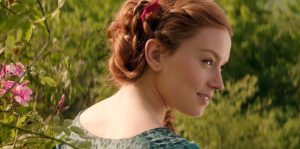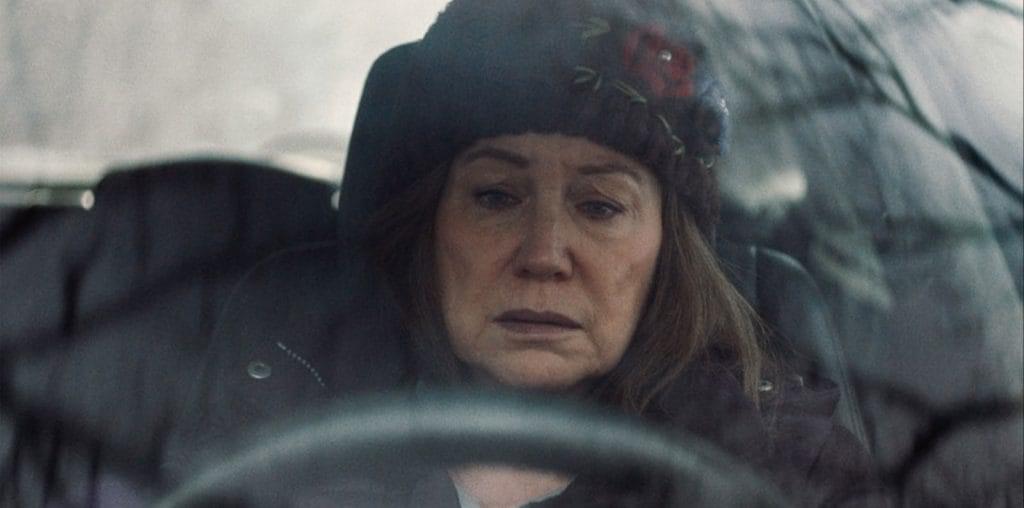
Hamlet, second to only Romeo & Juliet, really, is one of the most adapted Shakespeare plays, even having a modern-day adaptation starring Ethan Hawke as the brooding prince of Denmark and Julia Stiles as Ophelia. In most versions of the play, Ophelia and Gertrude (Hamlet’s mother) are seen as a lot of the women in The Bard’s plays; weak, simpering, scheming, or otherwise mentally deficient by comparison with their male counterparts. Claire McCarthy and screenwriter Semi Chellas wanted to change that in their loose interpretation of the Lisa Klien book, Ophelia. The film gives agency to the female characters and shows a little bit more of the male characters’ imperfections as well. It’s a beautiful, well crafted modern twist on a classic with an extraordinary cast.
I was lucky enough to speak with director Claire McCarthy over the phone about all things Ophelia. Read on for more.

“We didn’t want to feel like it was being too lofty or high brow. So, it was fun to figure out how we would approach language…”
I really loved the film, and I just wanted to start off with where did you shoot?
McCarthy: We shot the film in Prague, Czech Republic. We had an incredible local and international team. We shot both on set in Prague and also on location in and around Czech.
Yeah, I was wondering because of some of the sets. Were you inside any castles or were they mostly just well-designed sets?
Well, we had a small problem with needing to figure out what that castle was. So we went to every castle around Prague and the Czech Republic and we kind of cherry-picked our ideal looks for the interior of the castle, then we built a lot of them on the stage. Just for practical purposes–to be able to light them. We discovered that most castles have fortified citadels we had to get through, so a lot of them were out of the question in order to actually advance. So we just took the textures and the way light plays in the spaces. We really wanted the only light sources to be daylight, moonlight, the flame, for it to be true to what would have been the kind of light used at that time. We did a lot of observation and research and then created our version of it. We never went to Denmark. So we felt we didn’t need to make it really strictly the color palette of Denmark. So we went with a kind of pre-Raphaelite/romantic. We found a lot of inspiration, as well, from classic paintings. We did a lot of world building on observation and research and our own imaginations.
It’s beautiful, it looks like it’s in a real castle, so I just wasn’t sure, because I know that it can go either way on these sorts of period productions.
That’s a testament to my designer, the way he pushed that team. Some of those on the team said it was the best set they’d ever made.
Was the script written before the film was developed or before the idea came about? Or did they kind of go in tandem?
Well, there was a really interesting book written by Lisa Klein called Ophelia, which became a kind of jumping off point for us, and Semi Chellas (the screenwriter) is a brilliant writer. She took that book, and we felt like half of it was for us in terms of making this into a movie, but it’s been kind of melting pot of the original play and then Lisa’s book and then Semi’s work connecting it. It was kind of a challenge because we really wanted it to be, essentially, putting up the best circumstances for a younger audience to be brought into Shakespeare, but not to feel like they’re taking their vitamins. We didn’t want to feel like it was being too lofty or high brow. So, it was fun to figure out how we would approach language from that side, how we’ve approached these interactions. What we would include in terms of famous soliloquies and monologues, what we would exclude, what would happen offscreen. Then also figuring out that the cast and who is going to be Ophelia and who’s going to be Gertrude and then attracting this incredible cast. It really brought it to life.
I wanted to just talk about the cast because everybody is great, but I especially enjoy Naomi Watts because she plays the Mechtilde and the Gertrude characters. Did you have her in mind during casting was going or was that kind of was serendipitous?
Oh, absolutely. I love that turn she did in Mulholland Drive, where she plays two characters.

“It was important to think about these characters, in order to make them feel more human, rather than judging them…”
Oh my God, yes, me too.
We had this idea to have her play two characters, and they’re sort of shadow selves. She’s just a wonderful human, collaborator, and artist. It was such a great, rich opportunity to break into different ideas of what those characters could be. Gertrude, similar to Ophelia–well, Ophelia’s another discussion, but Gertrude is often represented in the plays or in different interpretations as weak or inferior–sickly, or just frail. These kinds of ideas about womanhood are expressed through these characters in such a judging way. We wanted there to be more empathy and to humanize the characters and to understand her longing and her loneliness, the sense of shame, self-loathing and depression that she was feeling in her role and wasn’t suggested.
It’s not just this cushy situation being a queen. She’s often on the outer and in some ways very similar to Ophelia in that she has no currency, no voice within the world in which she is meant to be in power. In contrast with Ophelia, who is low-born and has no status and has no voice in the world in which she has no power. So, you know, finding the similarities between them and exploring these complex dynamics between these women. We’re also fighting through these other issues with the idea of Mechthilde and the witches. Women being abandoned or vanished from the world in which they’ve grown because of their beliefs, because of their femininity, because of their ideas. She kind of rebuilt herself in her own way on her own terms.
I wanted to ask because Daisy Ridley is involved in the whole Star Wars universe, how difficult was that? Just scheduling because I know that they’re always working on something and how did she become involved with the project?
It was such a huge conversation, how to find the right actress. Not just the external idea of, you know a vulnerable pre-raphaelite sort of maiden, even though the styling and the costume would link to that. We needed an actress who had strength and resilience..and someone we would believe who would survive this. Daisy just embodies those characteristics. We just really felt that she was great, and she responded well to the material. I think she does some of the most beautiful work in the story. Also, the fact that she’s not the main player in the world of the story. It’s couched in her point of view, and we are Ophelia’s eyes. Her viewpoint, her particular insight into the dynamics that are happening around her and finding an actress that didn’t feel passive or like a victim, like she was in the original play. It was a lot of very specific things in that character and casting that we needed, and I think Daisy really nailed it.
She was incredible! So, I’m like obsessed– well that’s a strong word, but I really love Clive Owen. Was as he originally picked for that role or did you have other people that you were kind of tossing around? Because I feel like he just fit perfectly as Claudius.
Yeah, it was so fun being able to work on this film with Clive. He was not afraid to let him (Claudius) be deliciously bad and scheming. One of the things that we’re trying to explore is that when you’re not given true currency when you’re not given a voice, this can turn people one way or the other. They can turn on themselves and become a shadow self as opposed to the true stuff. So he was really excited to show this scheming and these fascinations and to not let him off the hook, but he did try to find some vulnerability in him too. He’s a fantastic collaborator and a wonderful actor. I really, really enjoyed working with him.
That’s what I enjoyed about pretty much all of the characters in this interpretation; they all seem much more human. Because with Shakespeare, a lot of his characters are archetypal anyway. So how did you reconcile directing between those two different styles?
Yeah, it’s an interesting thing. I think it’s a discussion about representation. We talked a lot about what contemporary ideas that we could bring into the piece without it feeling anachronistic and still being faithful to the work, but allow it to speak more truly to the human condition and the things that we’re interested in thinking about today. I think there’s a lot of universal things in the work: family dynamics, class and who’s entitled to what over another, the limitations of personal freedom, as well as the complexities of the relationships and power dynamics in the story addressing what men were required to do in the world of the story as much as the women. I was thinking about that in terms of the touchstone to the contemporary. It was important to think about these characters, in order to make them feel more human, rather than judging them or having them feel like they have no reason to do what they’re doing. It felt important to give them depth and to build into it. That was another thing too, is that it’s really easy to be seduced by all these kind of fancy camera moves and wonderful costumes, particularly in a period film. We spent a lot of time on set planning and really modulating what this world looks like, but it was really about making sure that there was room for these actors to bring their best work and to have time to investigate the scope of these big characters.

